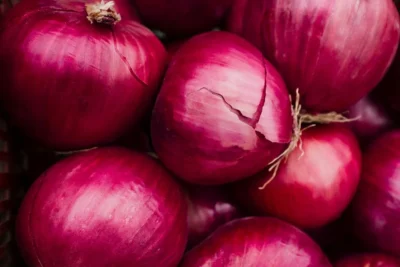Introduction:
Vegetables are a diverse group of edible plants that are essential to a balanced diet. They encompass various species, each with its own unique nutritional profile, flavor, and culinary versatility. From leafy greens like spinach and kale to root vegetables like carrots and potatoes, vegetables provide an array of vitamins, minerals, fiber, and phytonutrients necessary for optimal health and well-being.
Nutritional Benefits of Vegetables:
Vegetables are rich sources of essential nutrients that play crucial roles in various physiological functions within the body. They are typically low in calories and fat but dense in vitamins, minerals, and dietary fiber. Some of the key nutritional benefits of vegetables include:
- Vitamins: Vegetables are abundant sources of vitamins, including vitamin A, vitamin C, vitamin K, and various B vitamins like folate and riboflavin. These vitamins are vital for maintaining healthy vision, boosting immune function, supporting blood clotting, and facilitating energy metabolism.
- Minerals: Many vegetables contain essential minerals such as potassium, magnesium, calcium, iron, and zinc. These minerals contribute to bone health, muscle function, nerve transmission, and fluid balance within the body.
- Fiber: These are excellent sources of dietary fiber, including soluble and insoluble fibers. Fiber promotes digestive health by regulating bowel movements, preventing constipation, and supporting the growth of beneficial gut bacteria. It also helps control blood sugar levels, reduce cholesterol levels, and promote feelings of fullness and satiety.
- Antioxidants: Vegetables are rich in antioxidants, including vitamins C and E, beta-carotene, lycopene, and flavonoids. Antioxidants help neutralize harmful free radicals in the body, protecting cells and tissues from oxidative damage and reducing the risk of chronic diseases such as cancer, heart disease, and diabetes.
Cultivation Methods:
Vegetables can be cultivated through various methods, including traditional, organic, hydroponics, and vertical farming. The choice of cultivation method depends on factors such as climate, soil quality, available resources, and environmental considerations.
- Traditional Farming: Traditional farming involves cultivating vegetables in outdoor fields using conventional agricultural practices. Farmers prepare the soil, plant seeds or seedlings, apply fertilizers and pesticides as needed, and harvest the crops when they reach maturity. Traditional farming methods require access to arable land, sufficient water resources, and favorable weather conditions.
- Organic Farming: Organic farming relies on sustainable agricultural practices prioritizing soil health, biodiversity, and environmental stewardship. Organic farmers avoid synthetic pesticides, herbicides, and fertilizers, opting for natural alternatives such as compost, crop rotation, and biological pest control. Organic vegetables are grown without genetically modified organisms (GMOs) and are certified by regulatory agencies to meet organic standards.
- Hydroponics: Hydroponic farming involves growing vegetables in nutrient-rich water solutions without soil. Plants are supported by inert growing mediums such as perlite, vermiculite, or rockwool, which provide structural support and retain moisture. Hydroponic systems can be implemented indoors or in controlled environments, allowing for year-round cultivation regardless of external weather conditions. Hydroponic farming conserves water, maximizes space utilization, and minimizes the risk of soil-borne diseases.
- Vertical Farming: Vertical farming utilizes vertical stacking or tiered structures to grow vegetables in vertically inclined surfaces such as walls, shelves, or towers. Vertical farming systems often incorporate artificial lighting, climate control, and automated irrigation systems to optimize growing conditions and maximize crop yields. Vertical farming enables urban agriculture, reduces transportation distances, and minimizes land use, making it suitable for densely populated areas with limited arable land.

Culinary Versatility:
Raw: Many vegetables can be enjoyed raw as snacks or incorporated into salads, slaws, and crudité platters. Raw vegetables retain their natural crunch, freshness, and nutritional content, making them a refreshing and nutritious option.
- Steamed: Steaming vegetables involves cooking them over boiling water until tender yet still crisp. Steaming preserves the color, texture, and flavor of vegetables while retaining most of their nutrients. Steamed vegetables can be seasoned with herbs, spices, or sauces for added flavor.
- Roasted: Roasting vegetables in the oven enhances their natural sweetness and caramelizes their sugars, resulting in rich, savory flavors and tender textures. Commonly roasted vegetables include potatoes, carrots, broccoli, cauliflower, Brussels sprouts, and bell peppers.
- Grilled: Grilling vegetables over an open flame imparts a smoky flavor and charred exterior while preserving their natural juiciness and nutrients. Grilled vegetables can be seasoned with olive oil, balsamic vinegar, garlic, and herbs for added flavor.
- Sautéd: Sautéing involves cooking vegetables in a skillet or sauté pan with a small amount of oil or butter over medium heat. Sautéed vegetables cook quickly and develop a golden brown exterior, creating deliciously caramelized flavors and textures.
Cultural Significance:
Vegetables hold cultural significance in various cuisines and culinary traditions around the world. In many cultures, vegetables are revered for their symbolic meanings, ritualistic significance, and culinary heritage. Some examples of vegetables with cultural significance include:
- Eggplant: In Mediterranean and Middle Eastern cuisines, eggplant symbolizes fertility, abundance, and prosperity. Eggplant dishes such as moussaka, baba ghanoush, and ratatouille are cherished for their rich flavors and cultural symbolism.
- Tomatoes: Native to South America, tomatoes have become integral ingredients in Italian, Spanish, and Mexican cuisines. Tomatoes symbolize love, passion, and vitality and are celebrated in dishes like pasta pomodoro, Caprese salad, and salsa fresca.
- Cabbage: Cabbage holds cultural significance in many European and Asian cuisines, where it symbolizes luck, prosperity, and longevity. Cabbage dishes such as sauerkraut, kimchi, and coleslaw are beloved for their
Types of vegetables
A wide variety of vegetables are available, each belonging to different botanical families and offering unique flavors, textures, and nutritional profiles. Here are several types of vegetables categorized based on their plant parts:
- Root Vegetables: Root vegetables grow underground and store energy in their roots. Examples include:
- Carrots
- Potatoes
- Sweet potatoes
- Beets
- Radishes
- Turnips
- Leafy Greens: Leafy greens are characterized by their tender, edible leaves and are rich in vitamins and minerals. Examples include:
- Spinach
- Kale
- Lettuce (varieties such as romaine, iceberg, and arugula)
- Swiss chard
- Collard greens
- Mustard greens
- Cruciferous Vegetables: Cruciferous vegetables belong to the Brassicaceae family and are known for their distinctive, cross-shaped flowers. Examples include:
- Broccoli
- Cauliflower
- Brussels sprouts
- Cabbage
- Bok choy
- Kale
- Stem Vegetables: Stem vegetables are harvested for their tender stems or shoots. Examples include:
- Asparagus
- Celery
- Rhubarb
- Allium Vegetables: Allium vegetables belong to the Allium genus and are characterized by their pungent aroma and flavor. Examples include:
- Onions
- Garlic
- Shallots
- Leeks
- Scallions (green onions)
- Podded Vegetables: Podded vegetables consist of edible seeds encased in pods. Examples include:
- Peas (green peas, snow peas, snap peas)
- Beans (green beans, kidney beans, black beans, and chickpeas)
- Bulb Vegetables: Bulb vegetables grow underground and consist of layers of fleshy leaves. Examples include:
- Garlic
- Onions
- Shallots
- Tubers: Tubers are enlarged, underground stems used for storing nutrients. Examples include:
- Potatoes
- Sweet potatoes
- Yams
- Fruit Vegetables: Though technically fruits botanically, these vegetables are used in savory dishes. Examples include:
- Tomatoes
- Bell peppers
- Cucumbers
- Eggplant
- Squash (zucchini, yellow squash, butternut squash)
- Edible Flowers: Some flowers are edible and used in culinary preparations. Examples include:
- Squash blossoms
- Nasturtiums
- Chive blossoms
- Daylilies

1 Julienned Vegetables
Julienned vegetables refer to vegetables that have been cut into thin, uniform strips resembling matchsticks. This culinary technique is commonly used to prepare vegetables for salads, stir-fries, garnishes, and other dishes where a delicate and uniform appearance is desired.
To julienne vegetables, follow these steps:
- Wash and peel the vegetables, if desired. Common vegetables used for julienne cuts include carrots, zucchini, bell peppers, and cucumbers.
- Trim off the ends of the vegetables to create flat surfaces for stability.
- Using a sharp knife, carefully cut the vegetables lengthwise into thin slices, about 1/8 to 1/4 inch thick.
- Stack the slices on top of each other, aligning them as evenly as possible.
- With the stacked slices, cut them lengthwise again into thin strips, creating uniform matchstick shapes.
- Continue cutting until all the vegetables are julienned to the desired size.
- Once julienned, the vegetables can be used raw in salads, sandwiches, or as garnishes, or they can be cooked in stir-fries, soups, or other dishes.
Vegetable Benefits
Vegetables offer numerous health benefits due to their rich nutritional content, which includes vitamins, minerals, fiber, and antioxidants. Some of the key benefits of consuming vegetables include:
Nutrient Density:
Vegetables are nutrient-dense foods, meaning they provide a high amount of essential nutrients relative to their calorie content. They are rich sources of vitamins such as vitamin A, vitamin C, vitamin K, and various B vitamins. They also contain minerals like potassium, magnesium, calcium, and iron, all of which are important for maintaining overall health and vitality.
Fiber:
Vegetables are excellent sources of dietary fiber, both soluble and insoluble. Fiber plays a crucial role in digestive health by promoting regular bowel movements, preventing constipation, and supporting the growth of beneficial bacteria in the gut. A high-fiber diet can also help lower cholesterol levels, regulate blood sugar levels, and reduce the risk of developing certain chronic diseases like heart disease and type 2 diabetes.
Antioxidants:
Many vegetables contain powerful antioxidants, such as beta-carotene, lycopene, and flavonoids. Antioxidants help neutralize harmful free radicals in the body, which can damage cells and contribute to aging and disease. Consuming a variety of colorful vegetables can help boost antioxidant levels and protect against oxidative stress, inflammation, and chronic conditions like cancer and heart disease.
Weight Management:
Vegetables are low in calories and fat but high in water and fiber, making them ideal for promoting weight loss and weight management. Incorporating plenty of vegetables into meals can help increase feelings of fullness and satiety, reduce overall calorie intake, and aid in weight loss efforts. Vegetables also provide essential nutrients that support metabolism and energy production, helping to maintain a healthy weight and lifestyle.
Heart Health:
A diet rich in vegetables is associated with a lower risk of heart disease and stroke. Vegetables contain compounds like potassium, magnesium, and antioxidants that help regulate blood pressure, reduce inflammation, and improve blood vessel function. Consuming a variety of vegetables as part of a balanced diet can help protect against cardiovascular conditions and promote heart health over the long term.
Improved Digestion:
The fiber content in vegetables supports healthy digestion by promoting regular bowel movements and preventing digestive issues like constipation and bloating. Fiber also acts as a prebiotic, feeding beneficial bacteria in the gut and promoting a healthy gut microbiome, which is essential for optimal digestion, nutrient absorption, and immune function.
Incorporating a diverse range of vegetables into your diet can provide numerous health benefits and contribute to overall well-being. Whether eaten raw, steamed, roasted, or sautéed, vegetables are versatile ingredients that can be enjoyed in a variety of delicious and nutritious dishes.
What are the 10 best vegetables?
Determining the “best” vegetables can vary depending on individual preferences, nutritional needs, and culinary applications. However, here are ten vegetables that are widely recognized for their nutritional benefits, culinary versatility, and overall popularity:
Carrots:
Carrots are an excellent source of beta-carotene, which is converted into vitamin A in the body and essential for eye health. They are crunchy, sweet, and versatile, suitable for snacking, salads, soups, and roasting.
What are the benefits of eating carrots?
Eating carrots offers a multitude of health benefits due to their rich nutritional profile. Some of the key benefits of consuming carrots include:
It is rich in Vitamin A, has antioxidant properties, and promotes Health
Supports Digestive Health and Heart Health and May Lower Cholesterol
Promotes Skin Health and Boosts Immune Function
Incorporating carrots into your diet as part of a balanced and nutritious eating plan can provide numerous health benefits and contribute to overall vitality and well-being. Whether eaten raw, cooked, or juiced, carrots are a delicious and versatile vegetable that can be enjoyed in a variety of dishes and preparations.
Is a raw carrot good for you?
Yes, raw carrots are good for you and offer numerous health benefits. Eating raw carrots provides a rich source of essential nutrients, including vitamins, minerals, fiber, and antioxidants. Overall, including raw carrots in your diet as part of a balanced and nutritious eating plan can provide numerous health benefits and contribute to overall well-being. Whether eaten as a snack or incorporated into meals, raw carrots are a delicious and wholesome addition to any diet.
Can I eat carrots every day?
Yes, you can eat carrots every day as part of a healthy and balanced diet. Carrots are nutritious vegetables that offer a wide range of health benefits, and consuming them regularly can contribute to overall well-being. While eating carrots every day is generally safe and beneficial, it’s essential to maintain variety in your diet by incorporating other fruits and vegetables as well. A diverse diet ensures that you receive a wide range of nutrients and antioxidants to support your overall health.
However, if you have specific health conditions or dietary restrictions, it’s always a good idea to consult with a healthcare professional or registered dietitian before making significant changes to your diet, including increasing your consumption of carrots. They can provide personalized recommendations based on your individual health needs and goals.
Is carrot good for fertility?
Carrots are often associated with various health benefits due to their rich nutritional profile, but there is limited scientific evidence to suggest that carrots specifically improve fertility. However, the nutrients found in carrots, along with other fruits and vegetables, can contribute to overall reproductive health and well-being.
While carrots can be a nutritious addition to a fertility-friendly diet, it’s important to remember that fertility is influenced by a variety of factors, including genetics, lifestyle, and overall health. Eating a balanced diet that includes a variety of fruits, vegetables, whole grains, lean proteins, and healthy fats is essential for supporting fertility and reproductive health.
If you’re experiencing difficulty conceiving or have concerns about fertility, it’s recommended to consult with a healthcare professional, such as a reproductive endocrinologist or fertility specialist. They can provide personalized guidance and recommendations based on your individual health history and circumstances.
Carrots recipe
Here’s a simple and delicious recipe for honey-glazed carrots:
Ingredients:
- 1 pound (about 450g) carrots, peeled and sliced diagonally into 1/4-inch thick pieces
- 2 tablespoons unsalted butter
- 2 tablespoons honey
- 1/2 teaspoon salt
- 1/4 teaspoon black pepper
- Fresh parsley, chopped (optional, for garnish)
Instructions:
- In a large skillet or frying pan, melt the butter over medium heat.
- Add the sliced carrots to the skillet and sauté for about 5 minutes, stirring occasionally, until the carrots start to soften slightly.
- Drizzle the honey over the carrots and sprinkle with salt and black pepper. Stir to coat the carrots evenly with the honey mixture.
- Reduce the heat to low and cover the skillet. Allow the carrots to cook for an additional 10–15 minutes, or until they are tender but still slightly crisp, stirring occasionally.
- Once the carrots are cooked to your desired tenderness, remove the skillet from the heat.
- Transfer the honey-glazed carrots to a serving dish and garnish with chopped fresh parsley, if desired.
- Serve hot as a side dish alongside your favorite main course.
Enjoy your delicious and sweet honey-glazed carrots!

Spinach:
Spinach is packed with vitamins A, C, and K, as well as iron, calcium, and antioxidants. It’s a versatile green leafy vegetable that can be enjoyed raw in salads, sautéed as a side dish, or blended into smoothies.
Broccoli:
Broccoli is rich in vitamin C, vitamin K, fiber, and antioxidants like sulforaphane. It can be steamed, roasted, stir-fried, or added to soups and casseroles for a nutritious boost.
Bell Peppers:
Bell peppers have lots of vitamin C, vitamin A, and antioxidants. They come in different colors like red, yellow, orange, and green. You can eat them raw in salads, stuff them, grill them, or roast them.
Sweet Potatoes:
Sweet potatoes are rich in vitamins A and C, fiber, and potassium. They taste sweet naturally and can be baked, mashed, roasted, or added to soups and stews.
Kale:
Kale is a nutrient-dense leafy green vegetable that’s high in vitamins A, C, and K, as well as calcium and antioxidants. It’s commonly used in salads, smoothies, soups, and sautés.
Brussels Sprouts:
Brussels sprouts have lots of fiber, vitamins C and K, and antioxidants. When roasted or sautéed, they develop a caramelized flavor and crispy texture that appeals to many palates.
Cauliflower:
Cauliflower is low in calories and high in fiber, vitamins C and K, and antioxidants. You can roast it, mash it, rice it, or use it instead of grains in dishes like cauliflower rice or cauliflower pizza crust for a low-carb option.
Tomatoes:
Tomatoes are rich in vitamin C, potassium, and antioxidants like lycopene. You can eat them raw in salads, sandwiches, and salsas, or cook them into sauces, soups, and stews.
Cucumbers:
Cucumbers are hydrating, low in calories, and rich in vitamins K and B. People often eat them fresh in salads, sandwiches, and wraps, or pickled for extra flavor and crunch.
These ten vegetables offer a diverse array of flavors, textures, and nutritional benefits, making them excellent choices for incorporating into a balanced and healthy diet.



